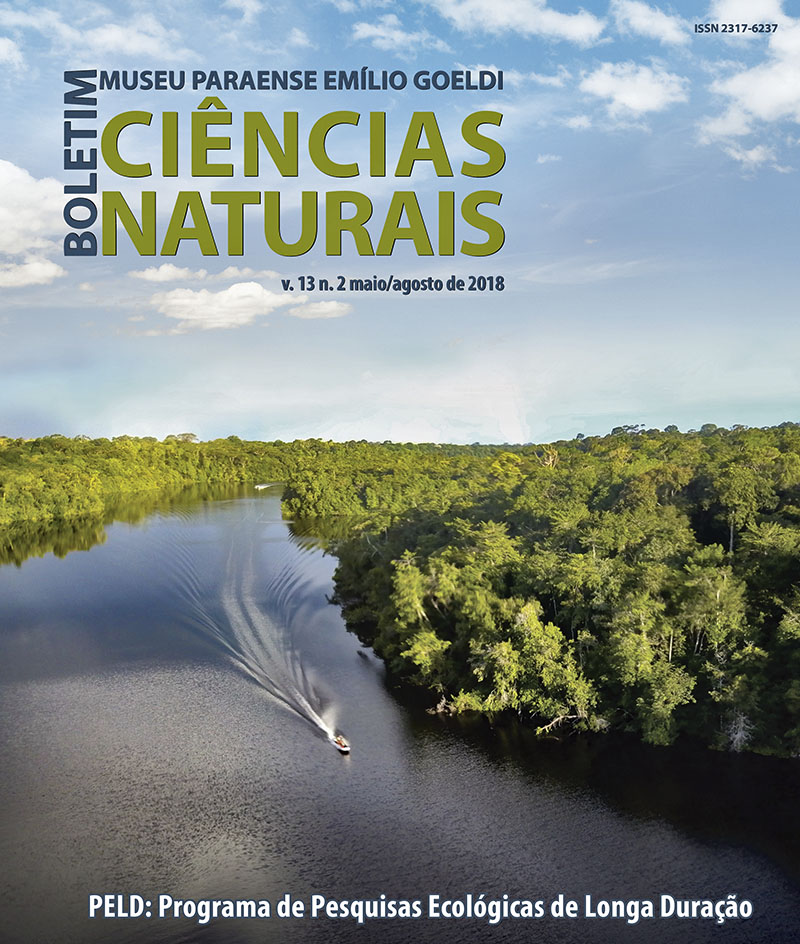Density of spores of arbuscular mycorrhizal fungi in a chronosequence of secondary forests in eastern Amazonia
DOI:
https://doi.org/10.46357/bcnaturais.v13i2.360Keywords:
Amazon, Succession, Seasonality, Soil, Arbuscular mycorrhizal fungiAbstract
In the tropics where most soil is infertile, the formation of mycorrhizal associations is of extreme importance for plant survival and growth. The objective of this study was to evaluate the arbuscular mycorrhizal fungi (AMF) density in a chronosequence of secondary and primary forests, between the dry and rainy seasons in the Caxiuanã National Forest, Pará, Brazil. Forty areas were selected, three areas of primary forest and 37 areas of secondary forests of different ages. On every excursion (three in the dry season and three in the rainy season), three soil samples were collected in each area. There was no relationship between AMF density and age of the forest. The number of spores was seen to increase with increasing moisture, with the amount of fine roots and the concentration of N, K and the total clay in the soil. Although mycorrhizal fungi have been widely used as bioindicators, the data demonstrate that the use of AMF density as an indicator in secondary upland forest, is limited to separating primary forests from secondary forests, and it is not possible to separate the different stages of the successional process.
Downloads
Published
Issue
Section
License
Publication means fully assigning and transferring all copyrights of the manuscript to the journal. The Liability Statement and
Assignment of Copyrights will be enclosed with the notice of acceptance. All the authors must sign the document and return it to the journal.






